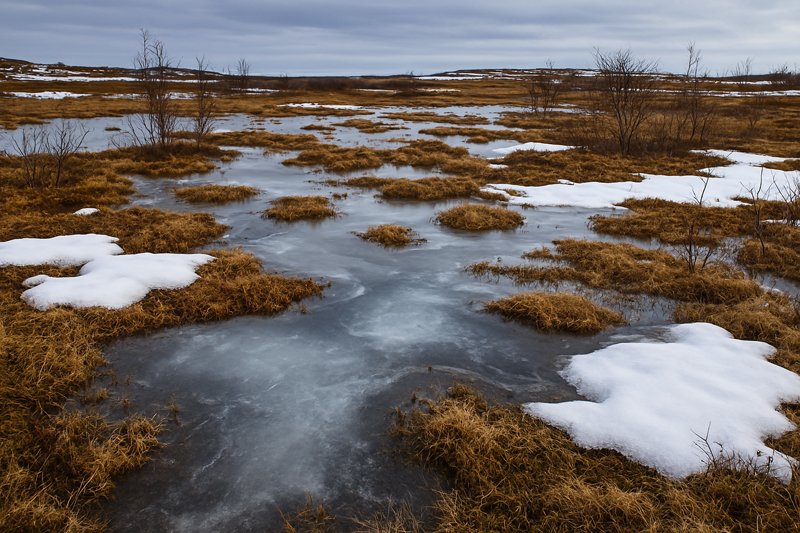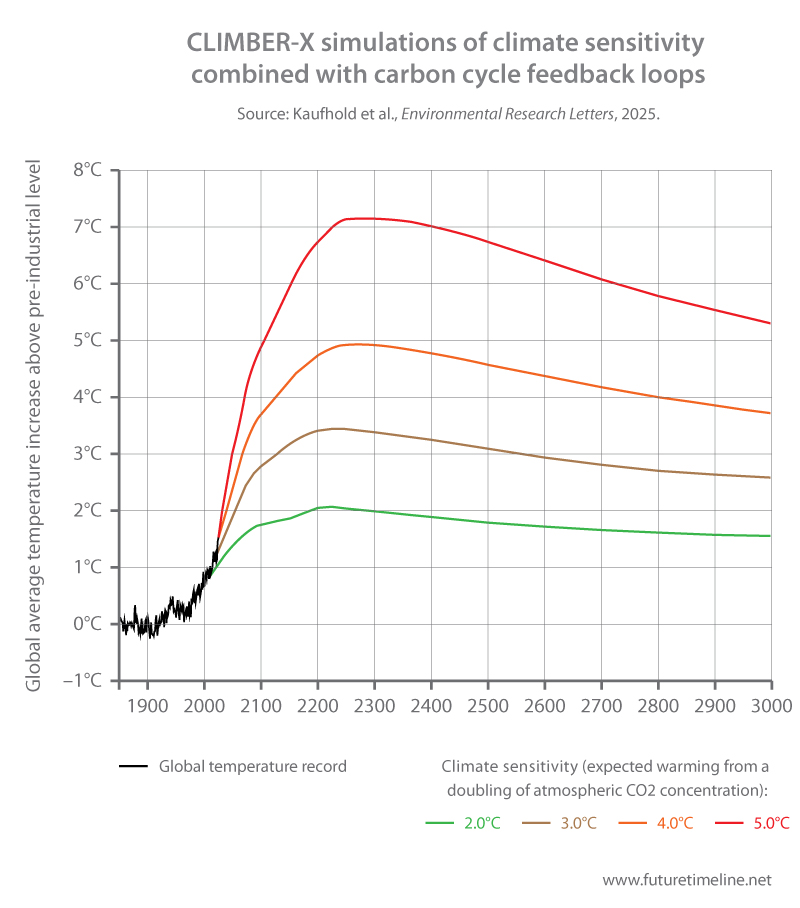
31st March 2025 Climate feedback loops could push warming to 7°C by 2200 A groundbreaking study warns that global warming could reach up to 7°C by 2200, even under moderate emissions, due to underestimated climate and carbon cycle feedbacks. This new research is the first to model climate impacts over the next 1,000 years while fully incorporating carbon cycle interactions, including methane.
A major new study, published this month in the journal Environmental Research Letters, reveals that the combined effect of climate sensitivity and carbon cycle feedback loops could drastically increase global warming above earlier projections. A team from the Potsdam Institute for Climate Impact Research (PIK) has found that even moderate emission scenarios, typically considered relatively safe, have the potential to trigger severe long-term warming. Current international targets, such as the Paris Agreement's goal to limit warming to well below 2°C, depend heavily on climate sensitivity. This term refers to the amount of warming expected from a doubling of atmospheric CO2 above pre-industrial levels. Before 1750, Earth had a CO2 concentration that hovered around 280 parts per million (ppm). In other words, climate sensitivity describes the expected future warming if we reach 560 ppm. Today, atmospheric CO2 stands at 427 ppm and is rising by about 3.5 ppm each year – a rate that keeps accelerating. On a business-as-usual trajectory, we are likely to reach 560 ppm – the doubling point – by around the middle of this century. Scientists generally associate this level with a 3°C rise in temperature. But if this climate sensitivity has been even slightly underestimated, the new study warns of far more dangerous outcomes in the centuries ahead. The PIK team employed a state-of-the-art model known as CLIMBER-X, which they used to incorporate feedback processes – such as methane emitted from thawing permafrost and wetlands – factors that many previous studies have overlooked. The inclusion of methane is particularly significant, as it substantially amplifies warming effects.
They then generated scenarios for the next 1,000 years, based on different emission levels. Their study is the first of its kind to account for these feedbacks over such a long timescale. Previous models have tended to stop at 2100, thereby missing longer-term climate dynamics. The simulations revealed that after emissions have peaked, warming could continue to increase for centuries, driven by self-reinforcing feedback loops. Even a moderate emissions pathway has a 10% chance of raising global average temperatures by 7°C by the year 2200, for example. This extreme scenario may arise because higher temperatures trigger more emissions from natural carbon reservoirs – notably thawing permafrost and wetlands – which in turn release large quantities of carbon dioxide and methane. These greenhouse gases trap yet more heat in the atmosphere, further accelerating the warming trend, and so on. Other feedback processes are known to play a role, and the team included these in their model. Warming-enhanced soil respiration, for example, means that as temperatures rise, microbial activity in soils increases, releasing more carbon into the atmosphere. In high climate sensitivity scenarios, the researchers found that around 50% of additional warming could be attributed to these feedback loops, with roughly equal contributions from both CO2 and methane. This highlights just how profoundly feedbacks can amplify global heating, making them as critical a factor as climate sensitivity in determining future outcomes. "The interplay between potentially high climate sensitivity and carbon cycle feedbacks could drastically enhance future warming, demonstrating the importance of properly accounting for all major climate feedbacks and associated uncertainties in projecting future climate change," the PIK team writes. So, alongside these feedback loops, a critical factor in the study is climate sensitivity. As mentioned earlier, this refers to the amount of warming expected from a doubling of atmospheric CO2. Most climate models assume a value of around 3°C, but the exact figure remains open to scientific debate. The true figure may lie anywhere between 2°C and 5°C. This uncertainty has potentially major implications. If sensitivity turns out to be at the high end of that range, far more warming could occur even under conservative emission pathways. On the other hand, if climate sensitivity is closer to the low end of the range – for example, around 2°C – the chances of extreme long-term warming would be reduced. In this case, global temperatures would likely remain within safer limits, even under a moderate emissions scenario. No new estimate for climate sensitivity is provided by the PIK team. What they do show, however, is that a more optimistic outcome cannot be assumed even for moderate or lower emissions, and that feedback loops can amplify warming beyond what climate sensitivity alone would predict. As such, their model highlights the urgent need to better constrain sensitivity estimates, as even a small margin of error may lead to significant underestimates of long-term climate risk. This is especially worth considering given the track record of climate science, where recent observed trends have turned out to be worse than originally forecast. "We found that peak warming could be much higher than previously expected under low-to-moderate emission scenarios," said PIK scientist Christine Kaufhold, lead author of the paper. "This highlights the urgent need for even faster carbon reduction and removal efforts." To put these numbers into perspective: 3°C of global warming would already entail devastating consequences – widespread crop failures, severe water scarcity across parts of the Middle East and sub-Saharan Africa, and a marked rise in deadly heatwaves affecting much of the world. At 5°C, large regions of the tropics could become uninhabitable, ecosystems would collapse on a massive scale, and sea level rise could displace hundreds of millions of people. A rise of 7°C, meanwhile, would trigger irreversible planetary tipping points, bringing about mass extinction and the breakdown of human societies. "Three degrees is already very bad, of course," explained Andrey Ganopolski, paper co-author. "Seven is not twice as bad as three, or even three times as bad. It's probably 10 times worse, because many things are non-linear." And while 2200 might seem like the distant future, it's closer than we think when viewed in terms of human generations, said Ganopolski. "I have grandchildren who will likely live in the next century."
Comments »
If you enjoyed this article, please consider sharing it:
|
||||||









